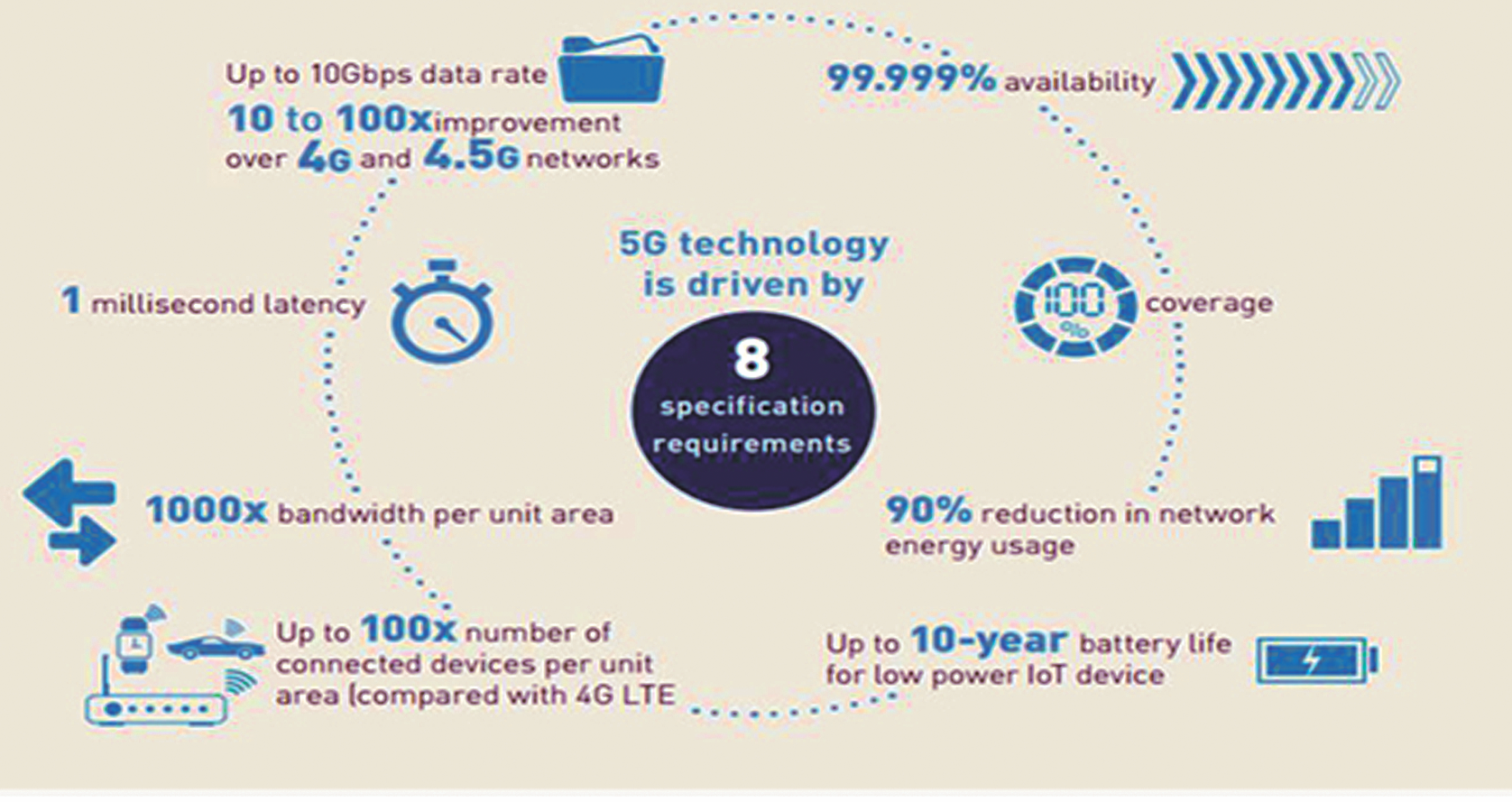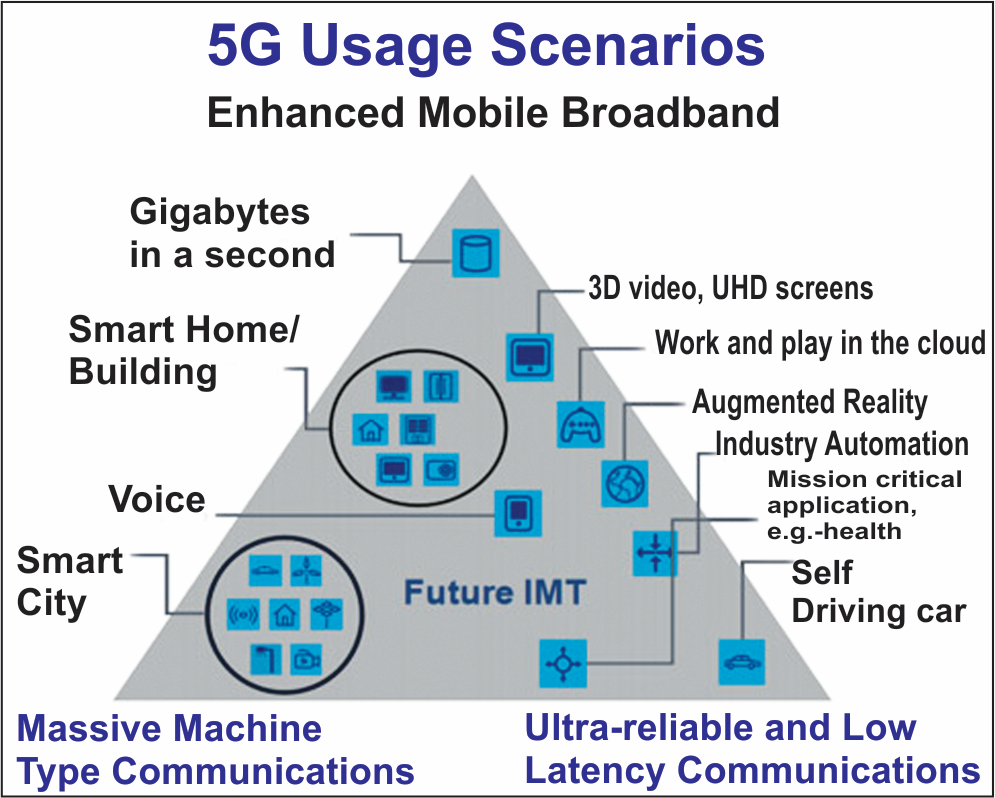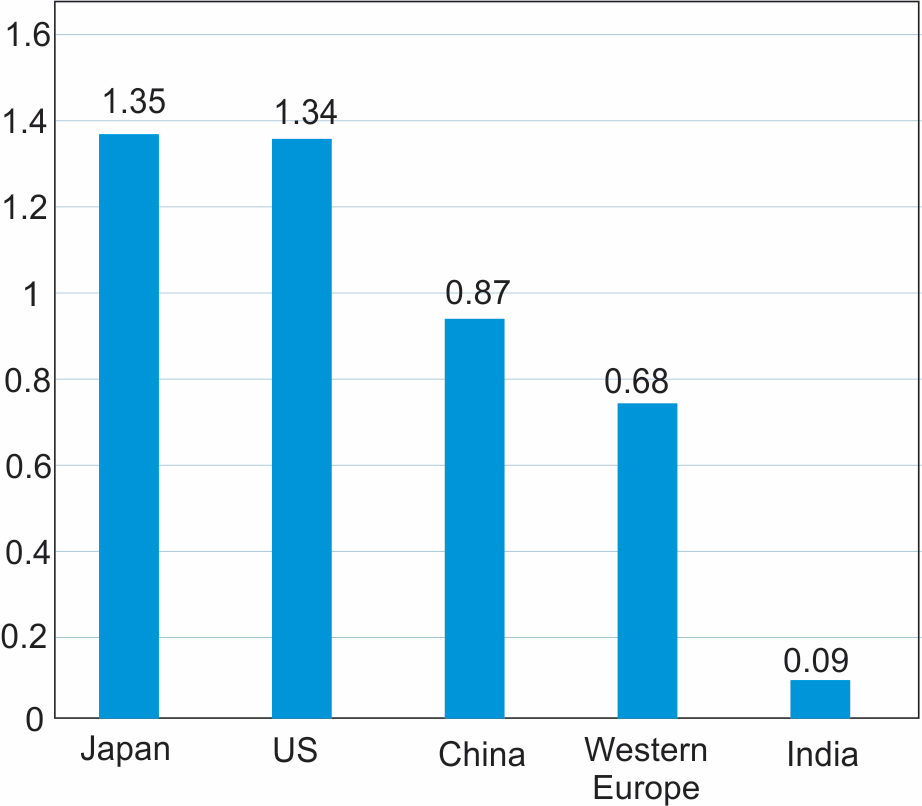5G In India
Is India 5G Ready?
Recently on 5th April 2019, South Korea launched the world’s first nationwide 5G mobile networks, giving access to super-fast wireless technology to its users. However, the buzzword around 5G technology is doing the rounds since long and has pitted major superpowers against one another to gain an edge over their rivals. In addition, it has become the Holy Grail for ushering in an era of fast speed data, reliable transmission and telecommunications, world of self-driven cars etc.
So, let us understand why there is so much of hype about 5G the world over and analyse if India, a software giant, is ready to bring in this massive hardware innovation within its fold.

What is 5G?
5G is the next generation of mobile standards being defined by the International Telecommunications Union (ITU), a specialized agency of the United Nations for information and communication technologies responsible for allocation of global radio spectrum and development of technical standards.
5G cellular mobile telephony has promising data speed of the order of 10 Gbps and beyond which is almost 20 times faster than 4G. In addition to this high data rate, 5G will also reduce latency (delay in data transmission), save energy, and enable massive device connectivity, paving the way for next-generation applications such as autonomous vehicles, smart homes and cities, augmented reality and virtual reality applications, Internet of things (IoT) and massive machine-to-machine communications (mMTC) for industries.
Following three main technologies form the backbone of 5G deployment:
- Enhanced Mobile Broadband (eMBB): To enable high user mobility, especially under scenarios, which require high data rates and cover wide area or ultra-high speed connection like in thickly populated urban areas. Additionally it can support Virtual Reality and Augmented Reality services too.
- Massive Machine Type Communications (mMTC): It can support a very large number of connected devices, like in IoT and enables high density of connectivity (around one million connections per square Km) for smart cities, smart power grids, smart industries etc.
- Ultra-Reliable Low Latency Communications (URLLC): It lays down stringent requirements on latency (delay), which is as low as one millisecond (compared to 50 milliseconds for 4G LTE), as well as 99.99 % reliability due to reduced packet loss. This technology enables communications in mission critical applications and thereby finds applications in robotics and autonomous vehicles.
Potential Benefits of 5G for India
- According to a World Bank report, implementation of 5G in India will accelerate the economic growth of India by 13.8%.
- It will facilitate automation through Internet of Things (IoT) ushering in ‘Smart Manufacturing’.
- It will make the use of Virtual reality and Robotics possible in health, education etc.
- It will give boost to Smart Cities Mission and Digital India programme.
- It will bring digital revolution in rural India through initiatives such as smart villages, IoT adoption, analytics and cloud solutions to improve productivity across sectors such as agriculture, MSMEs, banking etc.

Is India Ready for Deployment of 5G?
India, with the second largest mobile phone subscriber base in the world, has also joined the race for 5G – even when it saw the delayed adoption of lower generations of mobile networks like 3G and 4G.
Factors favouring 5G Launch in India
Some of the facts, which clearly ascribe to India’s aspirations and capabilities of adopting 5G, are as follows:
Positive Policies of Government:
- The National Electronics Policy 2019 aims to position India as a global hub for Electronics System Design and Manufacturing and promotes early stage Start-ups in emerging technology areas such as 5G, loT, Artificial Intelligence etc.
- In September 2017, government had constituted a ‘High Level 5G India 2020 Forum’, headed by A J Paulraj, to evaluate and build a roadmap for deployment of 5G in India by 2020.
- One of the objectives of new National Digital Communications Policy 2018 envisages expanding IoT ecosystem to 5 billion connected devices which could be easily achieved through 5G.
- Telecom Regulatory Authority of India has proposed guidelines for the next round of airwaves sale that includes 5G spectrum in the 3300-3600 MHz bands.
- To facilitate ‘fibre backhaul’ (interface between internet and cell sites) which is critical for deployment of 5G network infrastructure, government streamlined the Right of Way policy in 2016 and additionally Bharat Broadband Network programme is already underway.
- India took the lead role at Asia’s preparatory group for World Radiocommunication Conference in March 2019 and expressed its keenness on millimetre wave bands (30-300 GHz) which would enhance the usability of the spectrum.
- As per the Department of Telecom notification, pre-service rollout exercise for telecommunication companies, spectrum allocation for 5G trial and subsequent field experiments can take place from June 2019 onwards.
Private Participation in 5G for Potential Gains:
- 5G trials are slowly picking up with Ericsson, Nokia, Intel and Huawei aiming to further invest towards 5G test beds in India.
- With exponentially increasing Internet user base and consumption of high data rate make it lucrative for telecom companies to invest in 5G technology.
- Reliance Jio has already claimed its readiness for 5G services rollout in India by 2020.
No, India still faces many challenges in the deployment of 5G:
However, amidst the cacophony of so many possibilities, the following roadblocks stare hard at India and make one skeptical about the timely adoption of 5G technology.
- Deficiency across key priority areas:
Three priority areas in 5G are:
- Deployment of the technology at an early stage to reap benefits
- To have robust indigenous industrial and R&D capacity especially for the design and intellectual property
- Ability to expand the manufacturing base for 5G technologies, which includes both semiconductor fabrication and equipment assembly and testing.
In all these priority areas, India needs to do a lot of work to get some meaningful headway.
- Economic Constraints:
Due to aggressive price wars and dismally low tariffs:
- The telecom companies could not get returns on the investment they had made on 4G and 3G.
- Telecom sector is already overburdened (debt of approximately 8 lakh crore rupees as of 2019) and hence it cannot sustain the capital expenditure burden of an early 5G rollout.
- It is estimated that an additional investment of USD 60–70 billion is required to seamlessly implement 5G networks. However, the banks are already super-stressed which will hamper their capacity to extend credit to telecom companies at an affordable rate thus making 5G uncompetitive and unaffordable for end users.
- Most importantly, the willingness of people to switch to an expensive service when most of their requirements are already being met by 4G networkwill create a problem of inadequate economy of scale thereby further hurting the return on investments of the telecom companies.
- Another massive impediment in 5G deployment in India is the high price of telecom spectrum quoted by the national regulator at Rs 492 crore per MHz, which is significantly higher than other countries like South Korea, Japan etc.
- Technical Constraints:
- No uniform broadband strategy for the telecom sector along with lack of appropriate regulatory bodies.
- Low penetration of optical fibre network across the country, which is crucial for technology deployment.
- High dependence on imports (almost 90%) for critical inputs of the telecom equipments.
 Allocation of radio-frequency spectrum for 5G rollout is still at a nascent stage as different applications will use different frequency bands. The 5G High Level forum has recommended that 698-803 MHz, 3300-3600 MHz, 24.25-27.5 GHz, and 27.5-29.5 GHz bands be made available for 5G rollout. However, government is initially planning to work on low frequency band (3300-3600 MHz) and move to high frequency, high data rate band (24 GHz and above) later on.
Allocation of radio-frequency spectrum for 5G rollout is still at a nascent stage as different applications will use different frequency bands. The 5G High Level forum has recommended that 698-803 MHz, 3300-3600 MHz, 24.25-27.5 GHz, and 27.5-29.5 GHz bands be made available for 5G rollout. However, government is initially planning to work on low frequency band (3300-3600 MHz) and move to high frequency, high data rate band (24 GHz and above) later on.- India faces the issue of inadequate spectrum allocation compared to other countries as its total licensed mobile spectrum is about 220 MHz as compared to 608 MHz in the US and 353 MHz in the UK. Further, the cost of spectrum, relative to per capita GDP, is much higher in India than in most countries. These factors also amplify the infrastructure costs.
- Inadequate Knowledge Interface:
- Limited private sector capacity and its academic interface have left industrial and R&D capacity in an inadequate state.
Final Word
5G infrastructure in India is still in infancy and India’s journey to 5G is not going to be a cakewalk. Additionally, it seems that Indian telecom providers have no option but to procure and deploy 5G technologies from foreign suppliers and thus turning India into a mere market for 5G technology suppliers. Moreover, outrightly joining the 5G bandwagon may not be the best option for India, as some of the lucrative use cases like autonomous cars and connectivity in high-speed trains presently do not fit the Indian requirement. 5G should also appeal to the industry for specialized applications instead of just the consumer segment.
Therefore, India must build competency in areas such as R&D, design, testing and operational and support services. Additionally, government should support the sector by treating telecommunications as a utility rather than a market, and building innovation and IPR (Intellectual Property Rights) ecosystems rather than incentivizing licensed production. India should not find itself at the tail end of the 5G race and must gear up for its effective, efficient and beneficial deployment.




